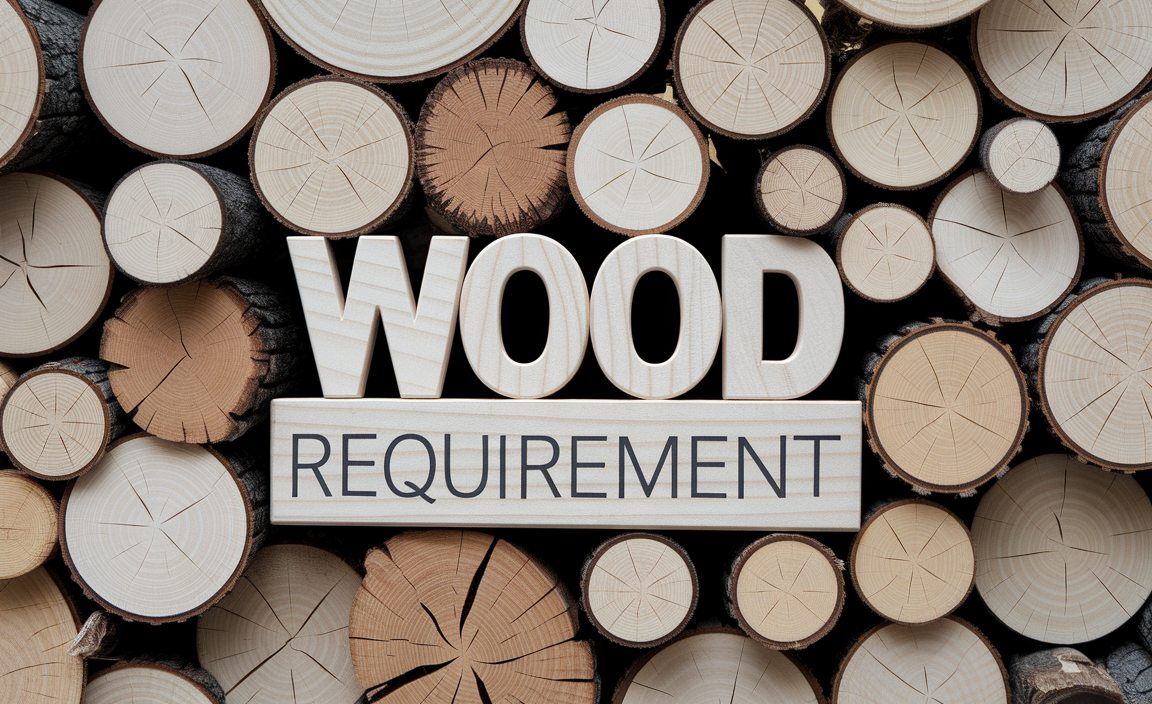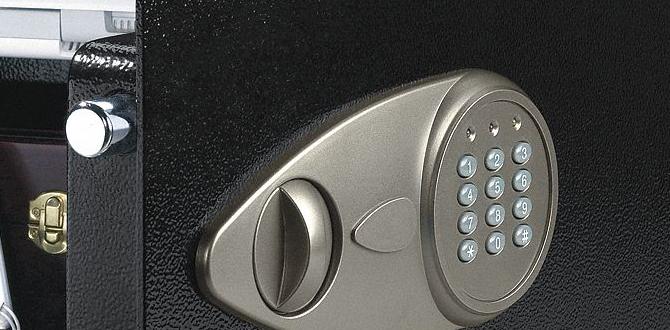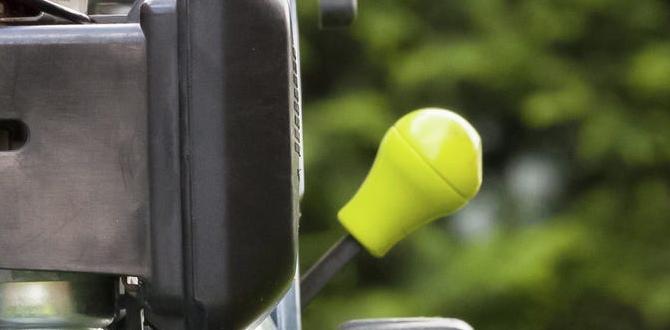Quick Summary: The main differences between framing nailers lie in their power source (electric, pneumatic, battery), nail collation angle (21°, 28°, 30°, 34°), and nail size capacity. Choosing the right one depends on your project needs, power availability, and budget.
Hey there, fellow DIYers and aspiring woodworkers! Jack Shaffer here from Nailerguy. Ever felt a little lost staring at a wall of nail guns, especially when a big framing project is calling your name? You’re not alone! Figuring out the key differences between framing nailers can feel like deciphering a secret code. But don’t sweat it! This guide is your friendly roadmap to understanding these powerful tools. We’ll break down exactly what makes them tick and help you pick the perfect one for your next build. Get ready to nail your next project with confidence!
Table of Contents
Why Understanding Framing Nailer Differences Matters
When you’re building or repairing, especially anything structural like decks, fences, sheds, or even the frame of a home addition, you need a nailer that can handle the job. Framing nailers are designed for this heavy-duty work. They drive larger nails quickly and efficiently, saving you a ton of time and elbow grease compared to hand-nailing. But not all framing nailers are created equal. The differences might seem small, but they can significantly impact how well the tool works for your specific tasks, the types of materials you can use, and even your comfort on the job.
Choosing the wrong framing nailer can lead to frustrating jams, nails that don’t drive all the way in, or a tool that’s just too heavy or cumbersome for extended use. On the flip side, the right one will feel like an extension of your arm, making tough jobs feel manageable and even enjoyable. Let’s dive into what makes these tools different so you can make an informed choice.
The Big Three: Power Sources of Framing Nailers
The first major difference you’ll notice when looking at framing nailers is how they get their power. This is a crucial factor that affects performance, portability, and cost.
1. Pneumatic Framing Nailers
These are the traditional workhorses. Pneumatic nailers use compressed air from an air compressor to drive nails. They are often seen on professional construction sites for a reason.
- How they work: An air compressor stores compressed air. When you pull the trigger, a burst of this air pushes a piston, which in turn drives the nail. You’ll need an air compressor, an air hose, and quick-connect fittings to use one.
- Pros:
- Powerhouse: Generally the most powerful, capable of driving large nails deep into dense hardwoods without a problem.
- Lightweight tool: The tool itself is usually lighter because the compressor and motor are separate.
- Reliability: Known for durability and consistent performance.
- Cost-effective (initially): The nailer itself can be less expensive than cordless models.
- Cons:
- Requires accessories: You need an air compressor, hose, and fittings, which add to the overall cost, weight, and setup time.
- Tethered: The air hose restricts your movement around the job site.
- Noise: Compressors can be quite loud.
- Maintenance: Air compressors and hoses require some maintenance.
2. Cordless Battery-Powered Framing Nailers
These are the modern marvels for DIYers and professionals alike. Battery-powered nailers offer the freedom of cordless operation without the need for a bulky compressor.
- How they work: These nailers typically use a combination of a small gas cartridge (like a fuel cell) and a battery-powered motor. The battery powers a fan that ignites the fuel cell, or it directly powers the driving mechanism. Some newer models are purely electric, using a motor and a spring or capacitor system.
- Pros:
- Ultimate Portability: No hoses or compressors mean you can move freely around any job site.
- Fast Setup: Just grab the nailer and go.
- Convenient: Great for quick jobs or working in hard-to-reach areas.
- Good Power: Modern cordless models offer plenty of power for most framing tasks.
- Cons:
- Cost: Typically the most expensive option upfront, especially when you factor in extra batteries.
- Weight: Can be heavier than pneumatic tools due to the onboard battery and motor.
- Fuel/Battery Dependence: You need charged batteries and fuel cells (if applicable). Running out mid-job can be a bummer.
- Slightly Less Power (sometimes): Historically, they might struggle with very dense hardwoods or extremely deep drives compared to top-tier pneumatics, though this gap is closing rapidly.
3. Electric (Corded) Framing Nailers
While less common for true framing, some electric nailers are designed for lighter framing tasks or for users who prioritize simplicity and don’t want to deal with compressors or fuel cells.
- How they work: These use a cord plugged into a standard electrical outlet to power a motor that drives the nail.
- Pros:
- No Fuel/Batteries to Buy: Cheaper to operate long-term.
- Consistent Power: As long as you have power, they’ll work.
- Lighter tool than some cordless.
- Cons:
- Tethered by a cord: Similar to pneumatic, but with an electrical cord, which can be a tripping hazard and limits range.
- Less Powerful: Generally not as powerful as pneumatic or high-end cordless models, making them less ideal for full-scale framing.
- Limited Availability: True framing-duty corded electric nailers are rare. More common are smaller electric nailers for trim or lighter tasks.
The Angle Advantage: Nail Collation Differences
Once you’ve decided on a power source, the next big differentiator is the nail collation angle. Collation refers to how the nails are held together in a strip. The angle of the strip is designed for different applications and user preferences. You’ll typically see 21°, 28°, 30°, and 34° nailers.
Think of it this way: the angle affects how the nail strip is fed into the gun and how the gun can be positioned against your work. A steeper angle means the nails are closer together on the strip, and the magazine (the part that holds the nails) is narrower. This allows the nailer to fit into tighter corners and spaces.
1. 21° (Plastic Collated) Framing Nailers
These are the most common type of framing nailer. They use nails collated with plastic strips.
- Nail Type: Full round head nails.
- Collation: Plastic strip, often with a slight offset to prevent nails from sticking together.
- Magazine Angle: The nails are held at a 21° angle.
- Pros:
- Widest Availability: Most common, so it’s easy to find the nailer and the nails.
- Durable Nails: Plastic collation generally holds up well.
- Good for Standard Framing: Excellent for wall studs, joists, and general construction.
- Strong Holding Power: The full round head offers maximum surface area for holding power.
- Cons:
- Plastic Debris: The plastic strips can break off and become debris on your job site. Some local building codes may have restrictions on plastic-collated nails for certain applications.
- Magazine Bulkier: The magazine is wider than steeper angle nailers.
2. 28° & 30° (Paper Collated) Framing Nailers
These use nails held together by paper strips, often with a slight adhesive or very thin wire. They offer a slightly steeper angle than the 21° models.
- Nail Type: Round head or clipped head nails.
- Collation: Paper strip.
- Magazine Angle: Around 28° to 30°.
- Pros:
- Less Debris: Paper collation tends to disintegrate more cleanly, leaving less noticeable debris on the job site compared to plastic.
- Can Reach Tighter Spots: The steeper angle on the magazine allows for better access in some tricky areas.
- Often allow for clipped head nails which can be cheaper.
- Cons:
- Paper Can Be Fragile: Paper strips can sometimes break in transit or handling, leading to jams.
- Availability: Slightly less common than 21° nailers and nails.
- Building Codes: Certain building codes might require full round head nails for structural integrity, which means you’d need to ensure you’re using the right type. For more on building codes, check resources from the Building Science Corporation.
3. 34° (Plastic Collated – “D-Head” or “New Strip” Nailers)
These are a newer evolution, also using plastic collation but with a much steeper angle. They are designed to be more compact and offer specific advantages.
- Nail Type: Often use “clipped head” or “D-shaped” heads. While they are shaped to be more compact, they still offer good holding power, especially when driven into framing.
- Collation: Plastic strip.
- Magazine Angle: 34°.
- Pros:
- Slimmest Magazine: The narrow magazine allows access into extremely tight corners and between closely spaced studs.
- Less Jamming (in some cases): The design can reduce slippage and jams.
- “Nail Everywhere”: Makes it easier to nail in positions where other nailers wouldn’t fit.
- Plastic Collated: Still benefits from the durability of plastic in holding nails together.
- Cons:
- Nail Head Type: Primarily uses D-head or clipped head nails, which may not be suitable for all structural applications according to some strict building codes. Always check local regulations if unsure.
- Availability: Less common than 21° nailers, and finding nails can sometimes be a bit trickier depending on your location.
- Plastic Debris: Still produces plastic debris.
Nail Size and Type Considerations
Beyond the collation angle and power source, the type and size of nails a framing nailer can accept are critical. Framing nailers typically fire nails that are longer and thicker than other types of nail guns.
- Nail Gauge: Framing nailers usually fire nails in the 8-gauge to 12-gauge range. Thicker nails (lower gauge number) provide more holding power. 8-gauge is common for heavy-duty framing.
- Nail Length: You’ll find framing nails typically ranging from 2 inches up to 3.5 inches long. The length you need depends on the thickness of the lumber you’re fastening. For common 2×4 framing, 2.5-inch or 3-inch nails are standard.
- Nail Head Style:
- Full Round Head: The classic nail head shape. Offers maximum bearing surface and holding power. Often required by building codes for structural connections.
- Clipped Head (or Offset Head): The head has a small section “clipped off.” This allows the nails to be placed closer together on the strip (enabling slimmer magazines). While they offer good holding power, some codes may prefer full round heads for critical structural joints.
- D-Head (or Shallower Round Head): A compromise between round and clipped, offering a slightly smaller profile than a full round head. Often used with 34° collated nails.
- Nail Material: Nails come in various finishes like bright (uncoated), galvanized (for exterior use), stainless steel (for extreme corrosion resistance), and painted. Always match your nail finish to your project’s environment.
Key Specifications to Compare: A Quick Table
To help you visualize, here’s a table comparing some of the core differences you’ll encounter:
| Feature | Pneumatic | Cordless Battery | Electric (Corded) |
|---|---|---|---|
| Power Source | Air Compressor + Hose | Onboard Battery (+/- Fuel Cell) | Electrical Outlet + Cord |
| Tool Weight | Lighter | Heavier (tool itself) | Medium |
| Portability | Limited by hose | Highest | Limited by cord |
| Power Output | Generally Highest | Very Good (improving) | Moderate to Good |
| Setup Time | Longer (compressor, hose) | Shortest | Shortest |
| Cost (Initial) | Lower (nailer) / Higher (system) | Highest | Moderate |
| Best For | Pro jobs, consistent power needs, heavy material | DIY, portability, frequent moves, mixed terrain | Light duty, simple access to power |
Here’s another look at the collation angles:
| Collation Angle | Nail Type Typically Used | Magazine Profile | Key Advantage | Potential Drawback |
|---|---|---|---|---|
| 21° | Full Round Head (Plastic Collated) | Widest | Most common, readily available, strong nails | Bulkier magazine, plastic debris |
| 28° – 30° | Round Head/Clipped Head (Paper Collated) | Medium | Less debris, decent access | Paper fragility, less common nails |
| 34° | D-Head / Clipped Head (Plastic Collated) | Slimmest | Best access to tight corners | Specific nail types, code concerns for some clips |
Choosing the Right Framing Nailer for YOUR Project
So, how do you land on the perfect nailer? Let’s break it down based on common scenarios:
For the Dedicated DIYer Building a Deck or Shed:
If you’re building a deck, a large shed, or a home addition, and you have access to power and a bit of space to set up, a good quality pneumatic framing nailer is often an excellent choice. The sustained power is fantastic for driving long nails into pressure-treated lumber. You’ll need a reliable air compressor and hose, but the tool itself will likely be lighter and potentially less expensive upfront than a top-tier cordless model. Look for a 21° model, as those nails are the most readily available.
For the Weekend Warrior Tackling Various Projects:
If you’re building fences, doing renovations, or working on projects around a property where you move frequently, a cordless battery-powered framing nailer is your best friend. The freedom from hoses and compressors is invaluable. You can grab it and go, work anywhere, and pack up quickly. While the initial investment is higher, many find the convenience well worth it. Consider a 21° or 30° angle depending on what you find in terms of nail selection and what models offer the best balance of power and ergonomics for you.
For Occasional Repairs or Tight-Spot Work:
If your framing needs are less intensive, or you frequently find yourself needing to toenail or get into very tight corners (like between closely-spaced studs), a 34° cordless framing nailer might be a specialized but worthwhile option. Its slim magazine is a game-changer for accessibility. However, be aware of the specific nail types and whether they meet your project’s structural requirements. For general, casual use, a standard 21° cordless is still a fantastic all-around choice.



